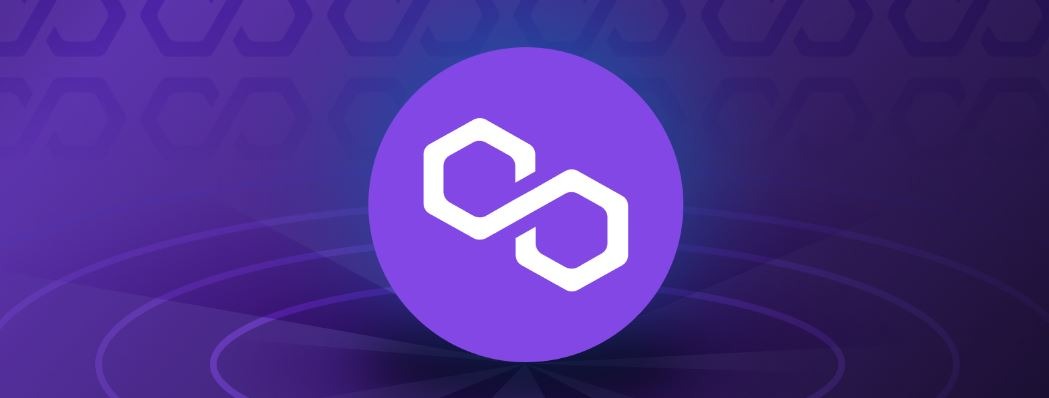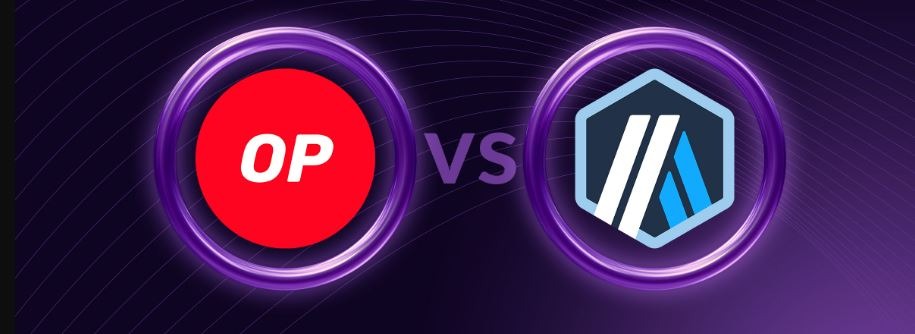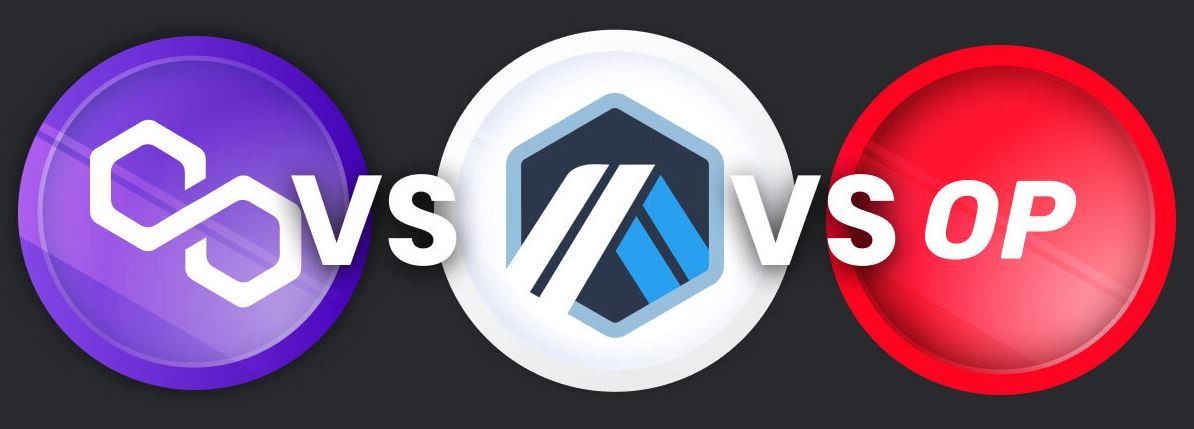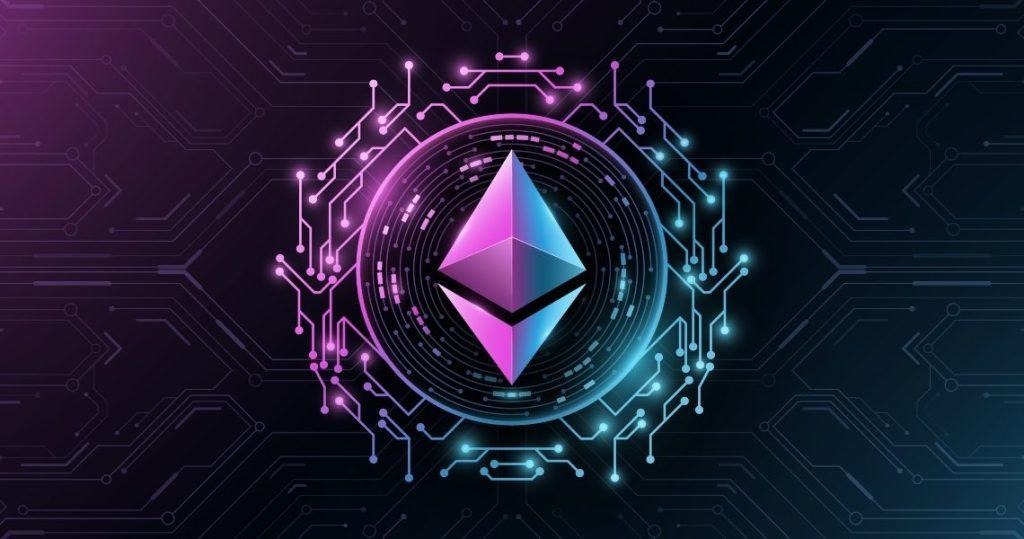Polygon vs. Optimism vs. Decision
Polygon vs. Optimism vs. Decision
 Hello bulb buddy ... :) In this article, we will examine the advantages and disadvantages of Layer 2 projects Polygon , Arbitrum and Optimism and compare their overall performance.
Hello bulb buddy ... :) In this article, we will examine the advantages and disadvantages of Layer 2 projects Polygon , Arbitrum and Optimism and compare their overall performance.
Estimated reading time: 7 minutes...
Ethereum Layer 2 Comparison
Polygon , Optimism, and Arbitrum are three well-known Layer 2 scalability options for the Ethereum blockchain. Each of these chains is trying to deal with issues affecting the Ethereum network, such as scalability, high transaction fees, and slow transaction speed.
In this blog post, we will compare these three solutions to help you understand their key differences and how they compare to each other in the ongoing L2 Wars.
What is Layer 2 protocol?

Interaction between Ethereum and L2 chains
Layer 2 protocol is a scaling option for blockchains that run on top of the main blockchain. It is aimed to increase performance by removing some of the workload from the primary blockchain. Layer 2 protocols can do this by batching transactions, leveraging off-chain computing and other methods. There are multiple ways to scale
Ethereum with L2 or layer 2 chains . Aggregates and Sidechains are two of the most commonly used methods for scaling Ethereum. One type of scalability solution, called aggregation, requires combining multiple transactions into a single transaction and sending them to the Ethereum blockchain as a single transaction. By splitting the cost of an Ethereum transaction and the modest cost of completing batches of transactions among users, the cost of transactions is reduced. Sidechains, on the other hand, are different blockchains that operate separately from Ethereum and are connected to the Ethereum Mainnet via a two-way bridge. Sidechains may include unique block parameters and consensus procedures that are often created for fast transaction processing. The nature of the bridging contracts used by aggregations and sidechains to lock money from the main chain to the other network is the key distinction between them. In sidechains, information about the main or sidechain may be provided to the bridging contract, but its accuracy is not verified. Rollups, in contrast, demand more resources from Ethereum while maintaining the security of the main chain. Both aggregations and sidechains have different advantages and disadvantages, and developers can choose the one that best suits their needs.
Currently, the most widely used blockchain platform for creating decentralized applications (dApps) is Ethereum.
The platform has struggled to keep up with the growth in users and transactions, resulting in slow transaction times and high gas fees. Layer 2 scaling solutions solve these problems by processing transactions in a separate layer before adding the data to the main Ethereum chain. This allows for faster transactions, lower costs, and greater scalability while maintaining the security and decentralization of the network.
Now let's examine these three Layers one by one:

What is Polygon and how does Polygon work?
Polygon (formerly Matic Network) is an L2 scaling solution to increase scalability and reduce transaction costs. It aims to combine the security, liquidity and interoperability of Ethereum with the flexibility and scalability of alternative networks.
The basic concept of Polygon is that it processes transactions outside of Ethereum using sidechains. Upon completion of a batch of transactions, it sends them back to the Ethereum blockchain along with proofs of validity that guarantee that the information is correct.
What is Optimism and how does Optimism work?
Optimism is another popular Layer 2 scaling solution that uses optimistic rollups to increase scalability and reduce gas fees. Optimistic rollups work by combining multiple transactions into a single rollup before sending data back to the main Ethereum chain. This keeps the Ethereum network secure while ensuring faster transaction speeds and lower fees.
What is Arbitrum and how does Arbitrum work?
Arbitrum is a Layer 2 scaling solution that also uses optimistic rollups to increase scalability and reduce gas fees. Like Optimism, it combines multiple transactions into a single aggregation before sending data back to the main Ethereum chain. However, Arbitrum also offers additional features such as Nitro mode, which provides faster transaction times and lower fees.
So how do these three solutions stack up against each other in the ongoing L2 Wars?
While all three solutions aim to address the same challenges on the Ethereum network, such as scalability, high transaction fees, and slow transaction times, there are some key differences between them.
Difference between Polygon and Optimism:
Layer 2 scaling options for Ethereum include Polygon and Optimism. Optimism has faster transaction speeds and lower transaction fees than Polygon, which is more decentralized and has a larger ecosystem.
Optimism leverages Optimist Rollups, while Polygon uses a combination of sidechains, Plasma, and PoS to ensure scalability. As a result, Polygon can process more transactions per second than Optimism, but its transactions are also less secure than Optimism's.
Additionally , Polygon offers a broader ecosystem of dApps and projects than Optimism, providing additional opportunities for consumers looking to leverage Polygon. However, Optimism is a more attractive choice for those looking to cut fee expenses due to its faster transaction times and lower transaction fees.
The ideal option for you will ultimately depend on your unique demands and preferences. If you're looking for a more decentralized solution with a large ecosystem, Polygon is a great option. Optimism is a smart choice if you want fast and cost-effective transactions.

What is the difference between Optimism and Arbitrum?
Two Layer-2 scaling options for Ethereum – Optimism and Arbitrum – offer faster transaction times and lower fees than the Ethereum mainnet. However, they differ in architecture, security and functionality.
The architectures used by Arbitrum and Optimism are sidechain and optimistic aggregation respectively. Accordingly, Optimism is a layer 2 solution running on Ethereum, while Arbitrum is a separate blockchain connected to Ethereum.
Arbitrum combines optimistic verification with fraud proof to ensure its transactions are safe. Optimistic verification is used to complete transactions quickly, while fraud evidence is used to identify improper transactions. Single-round fraud proofs are used by Optimism to guarantee the security of its transactions. Compared to Arbitrum's method, this method is easier to implement and more effective, but also less safe.
In general, arbitration costs are cheaper than optimism fees. This is because Arbitrum does not need to purchase gas on the Ethereum mainnet. In general, optimism fees are more expensive than arbitration fees. This is because Optimism has to spend money on gas on the Ethereum mainnet.
Although Arbitrum is not currently governed by the DAO , it will be so in the future. Optimis is a DAO, responsible for overseeing and developing the protocol.
Both Optimism and Arbitrum are promising L2 scaling solutions for Ethereum. Although Optimism has a more developed ecosystem and is simpler to use, Arbitrum is considered a more scalable and secure option. The best option for you will depend on your individual needs and preferences.
The best method to decide between Arbitrum and Optimism is to consider your individual needs and preferences. If you are looking for the most scalable and secure solution, Arbitrum is a great option. If you are looking for a solution that is simple to use and has a more developed ecosystem, Optimism is a good option.
Key differences between Polygon, Optimism and Arbitrum:

Should you choose a Layer 2 solution?
It's impossible to say which of Optimism , Arbitrum and Polygon is ideal because it depends on the specific requirements of your project in terms of transaction speed and gas fees; All three of these significantly outperform the original Ethereum network.
However, there are some differences in their methods and capabilities. Polygon is a flexible and adaptable solution due to its multi-chain design and support for various scaling techniques. Developers looking to port their dApps can take advantage of zkEvm technologies' compatibility with the Ethereum Virtual Machine.
Thanks to the Optimism rollup mechanism, it is easy for developers to port their dApps to Ethereum, but may provide less flexibility due to its emphasis on optimistic rollups.
Although it also uses optimistic aggregations in terms of scaling techniques like Polygon, Arbitrum's ecosystem and degree of decentralization differs from that of optimism, the ideal option for your project will ultimately depend on your unique demands and preferences. Before choosing a platform, it is important to analyze its features and capabilities.
In conclusion...
Polygon, Optimism, and Arbitrum are powerful Layer 2 scaling solutions for Ethereum, providing significant increases in transaction speed and gas fees. Each platform has its own unique features and capabilities, and the optimal choice for your project will depend on your specific needs and priorities.
Polygon's multi-chain system and support for various scaling methods make it a flexible and adaptable solution, while Optimism's aggregation technology is highly compatible with Ethereum. Arbitrum also uses optimistic rollups but differs from Optimism in its ecosystem and level of decentralization. It is recommended that you consider the features and capabilities of each platform before making your decision.
To summarize...
At the end of the day, it is clear that Polygon , Arbitrum , and Optimism are promising solutions to Ethereum's scalability and cost problems. Each has its own unique features and drawbacks, so it really depends on what the user is looking for.
It's impressive how the Ethereum community finds ways to continually improve the platform's performance and user experience while maintaining its core values of security and decentralization. As Ethereum continues to evolve, we are excited to see what new developments will emerge in the world of layer 2 solutions.
Ultimately, the development and adoption of L2 is the future of Ethereum and the key to solving the blockchain scalability problem.
Who knows what the future of decentralized finance and other Ethereum-based applications will look like...






























